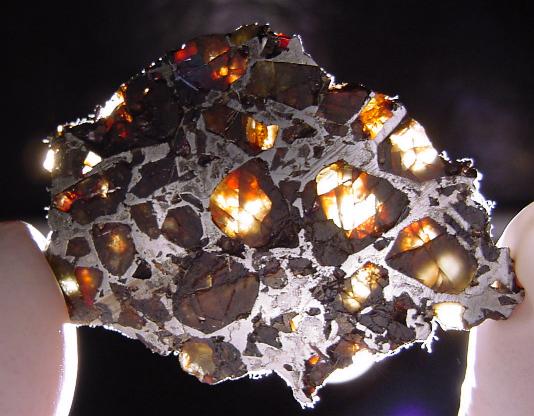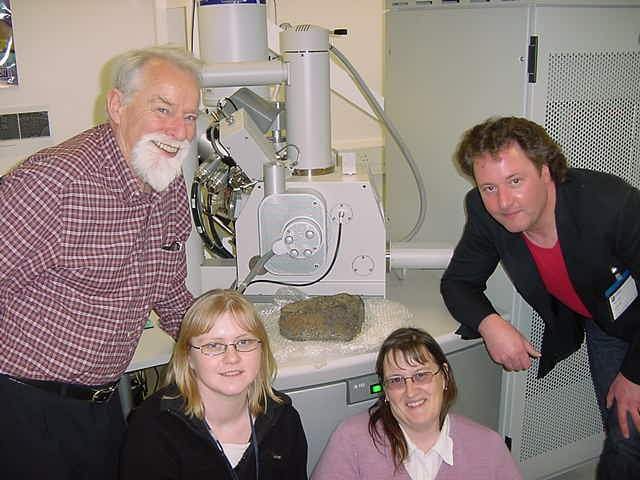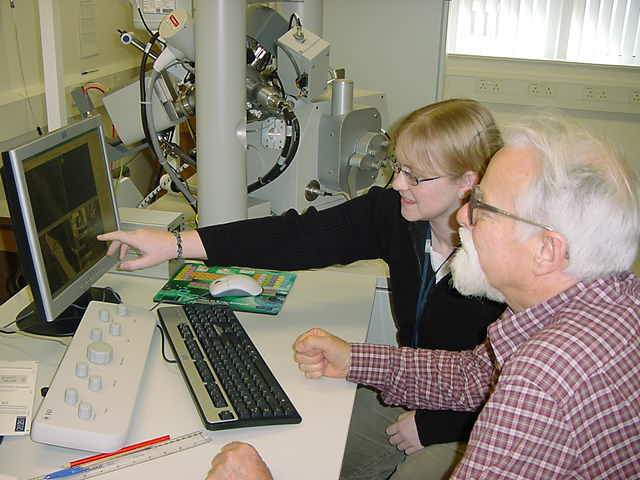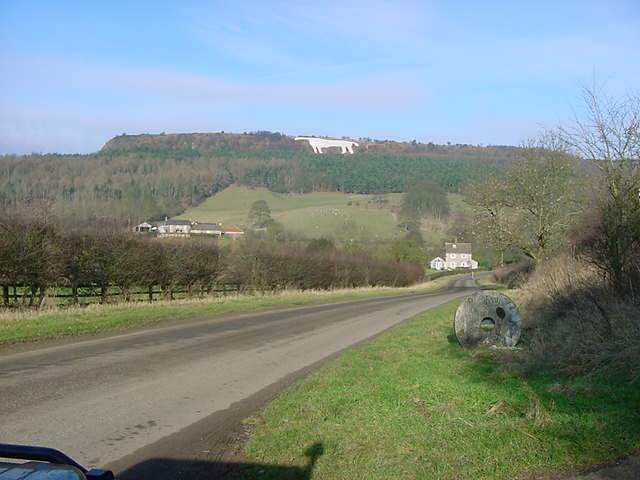![[IMAGE]](https://fernlea.tripod.com/pagehead.gif)
![[IMAGE]](https://fernlea.tripod.com/pagehead.gif)
In Memory of Robert Hutchison
1938 - 2007
Hambleton
A rare FeS-rich pallasite

Hambleton - a rare British
meteorite from Yorkshire, England
Hambleton is a main group
pallasite, but with some interesting and very unusual anomalies.
Sulphides are abundant - very unusually so for a pallasite. FeS
veins have nickel-poor centres and sharply defined nickel-rich
rims, inconsistent with alteration, with anywhere up to 60%
nickel. Hopes are high that we have a
new mineral!!
Hambleton also gives strong support for events during
pallasite genesis & evolution - evidence that has previously
been sought, but lacking until now.
Abstracts & MetSoc Poster:
Meteoritical Society Meeting 2006 - Hambleton Poster
Analysis & classification (will appear in Meteoriticial Bulletin 91):
Hambleton
Location: Hambleton, North Yorkshire, England
Fall/find: Find
Date found: August 2005
TKW: A single mass weighing 17.6kg
Classification: Stony-Iron (Pallasite-Main Group)
History: A mass of 17.6 kg was found beside a
forest track by Rob and Irene Elliott while hunting for
meteorites, approx. 2km south of Hambleton, North Yorkshire,
England. Physical characteristics: One individual was found. It
has a highly weathered exterior with cm-sized patches of blue
weathering products. No fusion crust is present.
Petrography (D. Johnson and M. M. Grady, PSSRI,
OU; R. Hutchison and C. Kirk, NHM, London). The meteorite is
brittle and easily fragments. It contains ~ 60 vol% olivine, Fo88.3,
~25 vol% metal and ~15 vol% sulphide, irregularly distributed.
Olivine ranges in size from ~10 mm in fractured, rounded grains
that form mosaics in olivine-rich regions, to angular fragments
<0.1 mm set in metal or sulphide where these opaques are
dominant. The olivine mosaics have metal and/or sulphide veins
along grain boundaries or filling fractures. Metal is largely
kamacite, commonly as plessitic intergowths with taenite, which
also forms thin rims with <60 wt% Ni. Sulphides are abnormally
abundant for a pallasite and some regions <5 cm across are
composed almost exclusively of troilite, enclosing minor
fragmented olivines. Within olivine and metal, sulphides occur as
veins, commonly with Ni-poor centres and Ni-rich rims. Chromite
and schreibersite are accessory phases. The outer 1 cm of the
mass is terrestrially weathered, with veins of Fe oxides and
patches of a blue phosphate mineral.
Geochemistry Oxygen isotopic ratios (I. A.
Franchi, PSSRI, OU) d17O = +1.383, d18O = +3.029, D17O = -0.187
are typical of a main group pallasite. We hope to have the metal
composition data by end of April.. Classification: Main Group
Pallasite.
Specimens: Main mass with Rob Elliott, Fernlea
Meteorites.A 1 kg sample, 3 slices and 1 thin section, are on
deposit at PSSRI, OU.

Two generations of "Catalogue of
Meteorites" authors
Profs & Drs Robert Hutchison, Diane Johnson, Monica Grady,
Rob Elliott

Dr Diane Johnson and Professor Robert
Hutchison
analysing Hambleton on the SEM

The Hambleton area and the White Horse of
Kilburn

We drove for half a mile down here and
wondered what all the fuss was about.....
.....and then we found out!

Fernlea, The
Wynd, Milton of Balgonie, Fife. KY7 6PY United Kingdom
Please
- no requests to authenticate old rock and stone finds
I've heard the
"My grandad saw it fall in a field and gave it to me!"
story (and all variations) a zillion times
Telephone: 07880-888660
Email: fernlea4@aol.com
© Rob Elliott